I am determined to finish up this India series if it takes me all year. Here’s one more down on a rainy Tuesday, with one left to go…
I’ve known my friend John since 1993. As a colleague with American Express, he was one of the first people I met when I reported to duty as National Account Manager at the United Nations account. I had an office on the 19th floor of the UN Secretariat Building, and John’s office was across the street at UNICEF. We became “fox hole buddies” in managing one of the most challenging accounts New York City had to offer. From that point on, we have been bonded in a true friendship that has stood the test of decades.
There are few people I have met in my life who can match my insatiable case of wanderlust and love of travel, and John is one of them. So whenever I travel to some place like India, I always consult him for advice. In an email exchange, I told him I was on my way to Goa by way of Mysore, where I only planned to spend two nights, long enough to tour the famous palace there.
John replied, “I loved Mysore and the palace. I would love to know where or what happened to the Devaraja Market. I read this historical market had a fire and the sellers had scrambled to rebuild or find a place to go. I made a friend while there. I often think of him when going through pictures and wonder how he is. Should you stop in Mysore and discover the new Devaraja Market and see this man, (photo attached) tell him I’ve not forgotten him.”
I looked at the photo of the young man in the baseball cap standing in the market stall filled with incense, scented oils, and brilliantly colored bins of gulal powder, and contemplated John’s remark. I considered the odds of finding someone in a market of over 1,200 stalls with the only thing to go by being a 12 year old photo not much larger than a postage stamp on my iphone.
Like most major India cities, Mysuru has two names; an original name, Mysuru, and one coined during the time of British rulers who couldn’t pronounce or didn’t like the original, so they changed it to something easier, in this case, “Mysore.” In keeping with the name change back to the original Indian names, the official name has been reverted to Mysuru, though the two are still used interchangeably. Personally, I prefer the original, as the sound of the other name, “Mysore,” evokes pain.
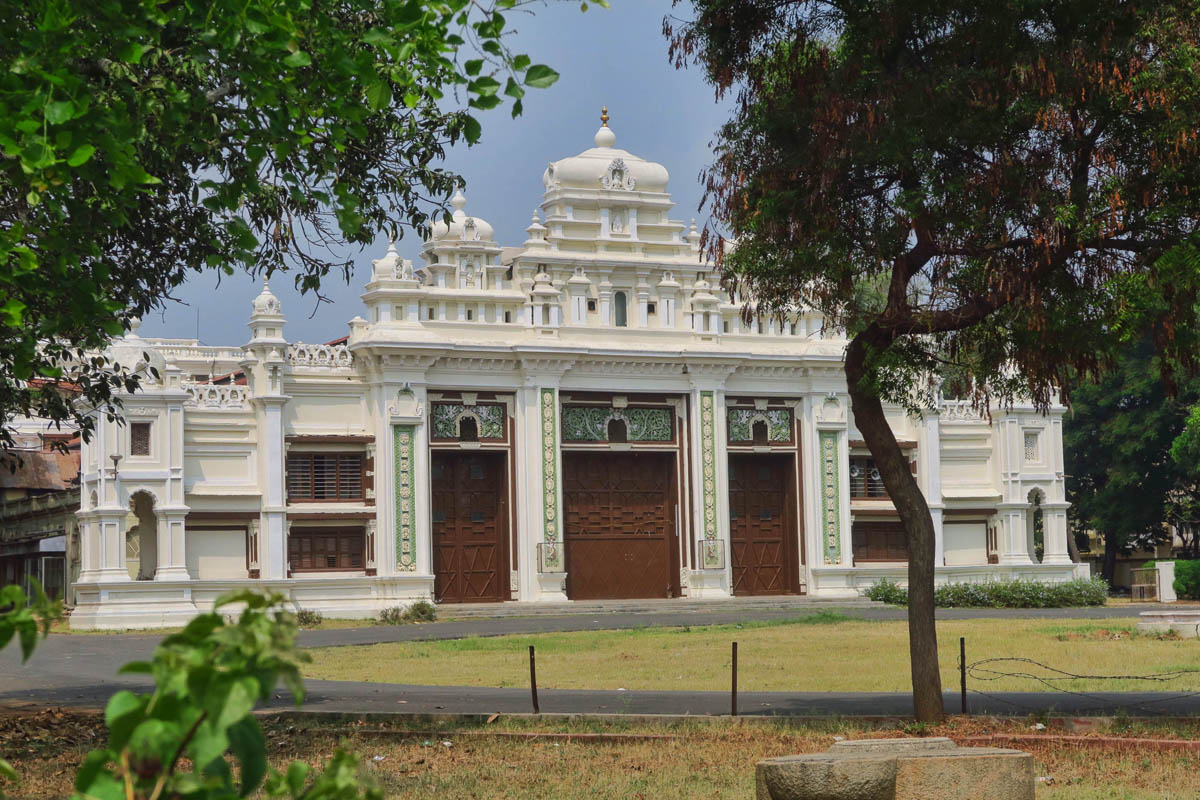
Mysuru, known as India’s “City of Palaces,” is home to ten palaces, this one the Jaganmohan Palace, built in 1869. It served as the Royal Palace while the current palace was under construction following the 1897 fire when the original 14th century wooden palace burned to the ground. This palace now houses an art gallery.

However, the most famous of Mysuru’s palaces by far is just known as “Mysore Palace,” and is the current residence of Mysore’s Royal family.
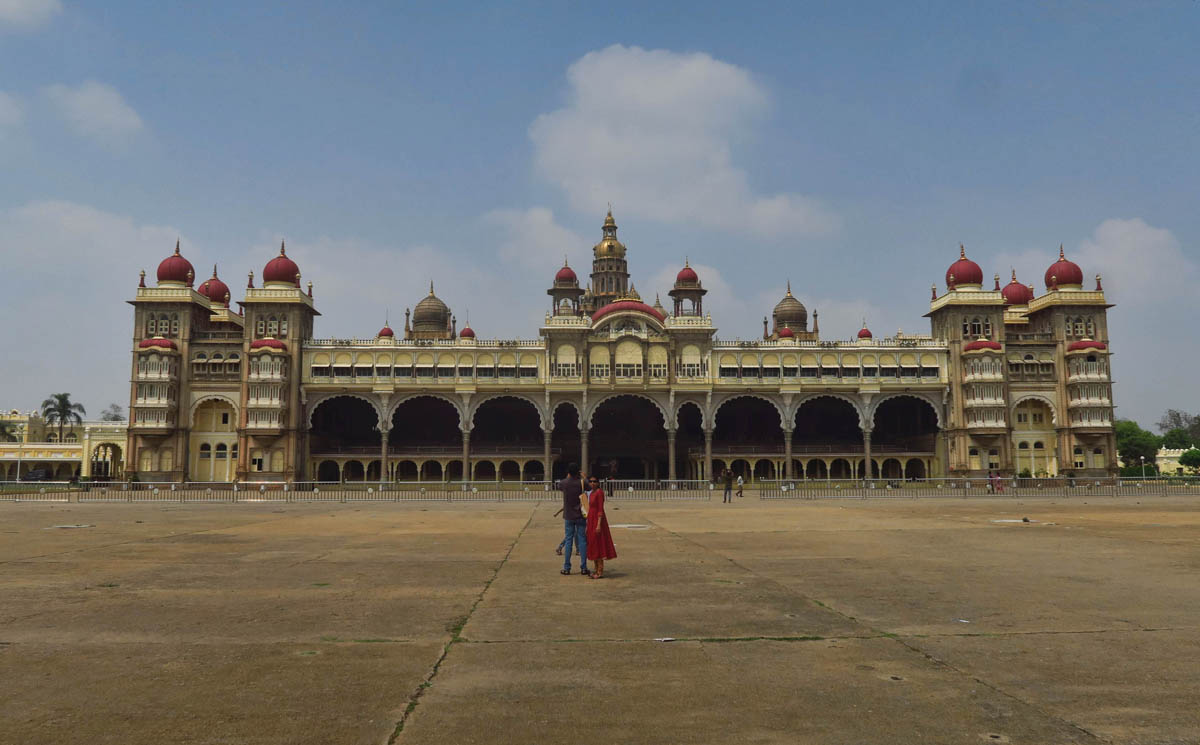
Constructed in 1912, the palace covers over 196,000 sq ft on 76 acres.

The Mysore Palace is the official residency of the Wodeyar dynasty which ruled the Kingdom of Mysore for over 550 years.
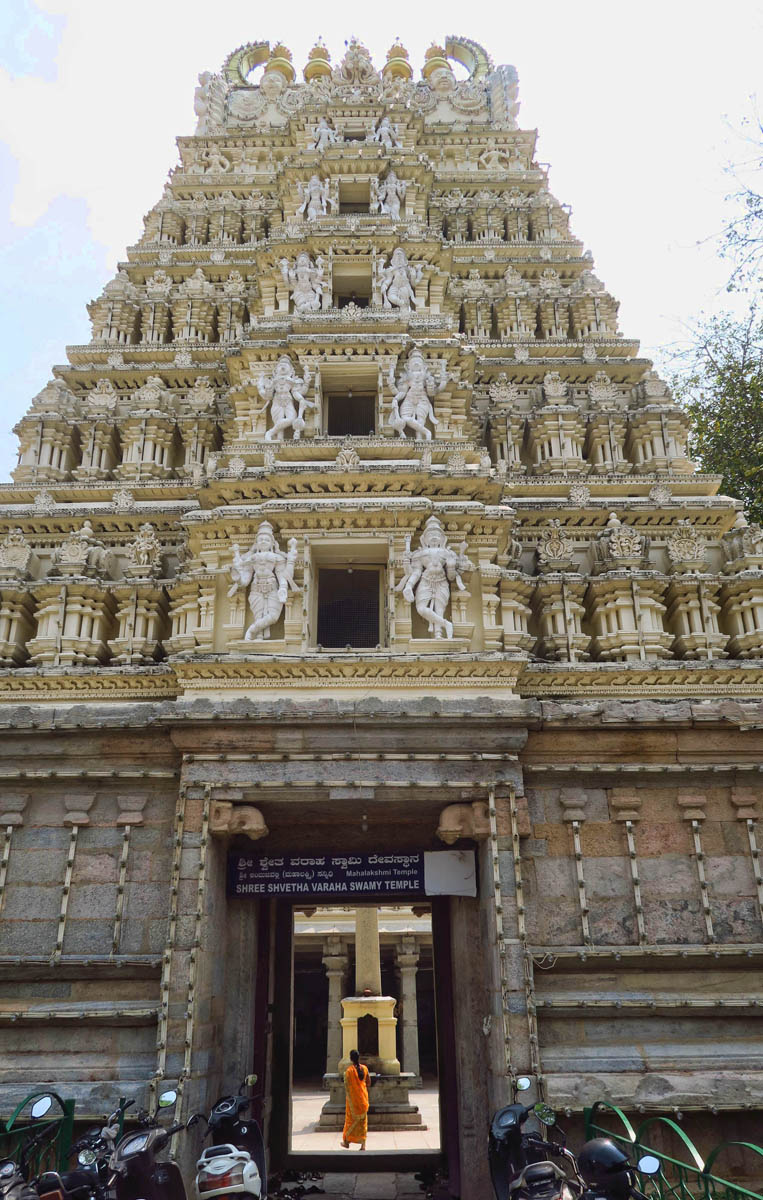
Inside the palace complex are 14 Hindu temples, this one, the Varahaswamy Temple.
Though train is always my preferred method of travel in India, there is no service from Ooty to Mysore so I had to take the bus. I booked the highest class of service I could find, and still felt like I needed to hose myself down after the ride. Even India’s “luxury class” would be on a par with the worst Mexico has to offer. I am forever spoiled by Mexico’s clean, efficient First Class buses that rival premium seats on some airlines.
I arrived from the cool mountain town of Ooty into the Mysore bus station in the midst of a downpour. It was hot, humid, and hectic. So steamy my eyeglasses fogged up when I stepped off the bus. Still schlepping my camping gear from my trip through Ethiopia, I felt overwhelmed in the pouring rain, managing to get as far as the nearest covered area to wait for the deluge to pass. With just under 48 hours in Mysore to see what I came to see, I cursed the rivers of rain running through the streets impeding my progress. I really could have used a break where the weather was concerned in this, my shortest of stays in India.
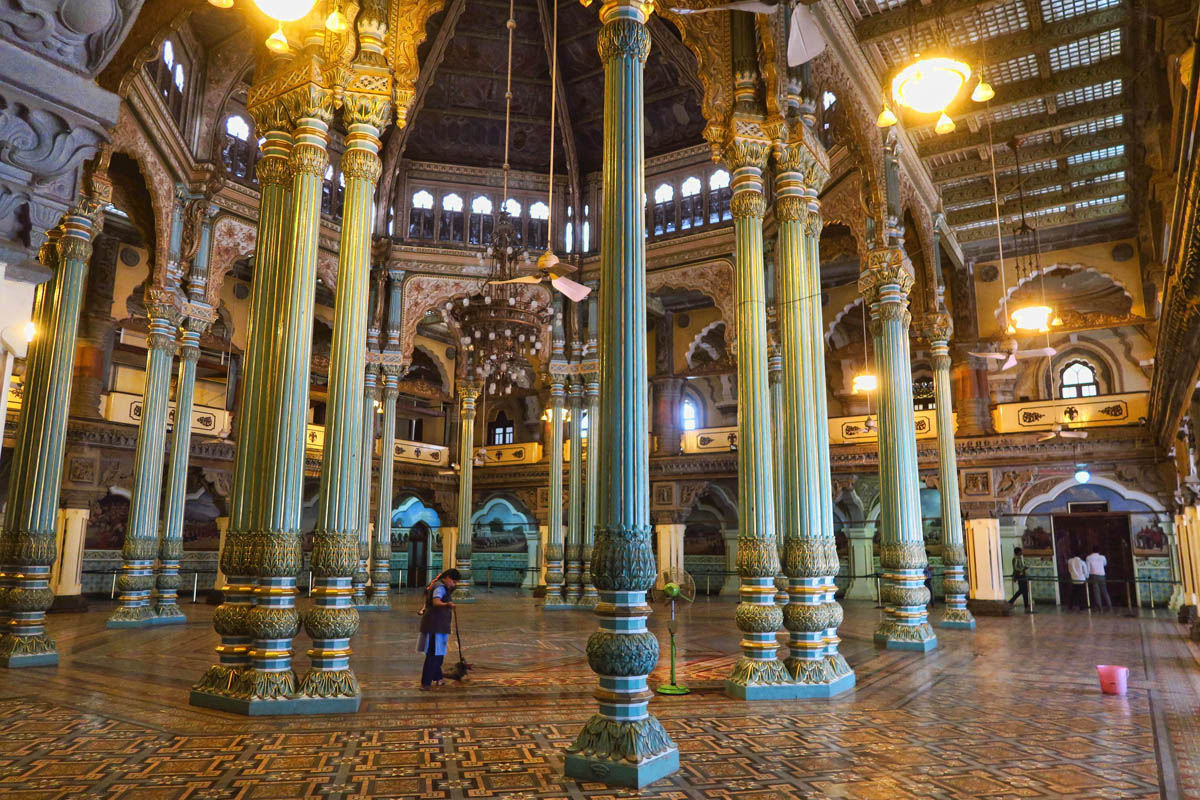
Octagonal-shaped dome in the marriage hall, sight of royal weddings. The entire 24-column, domed structure was imported from Scotland.
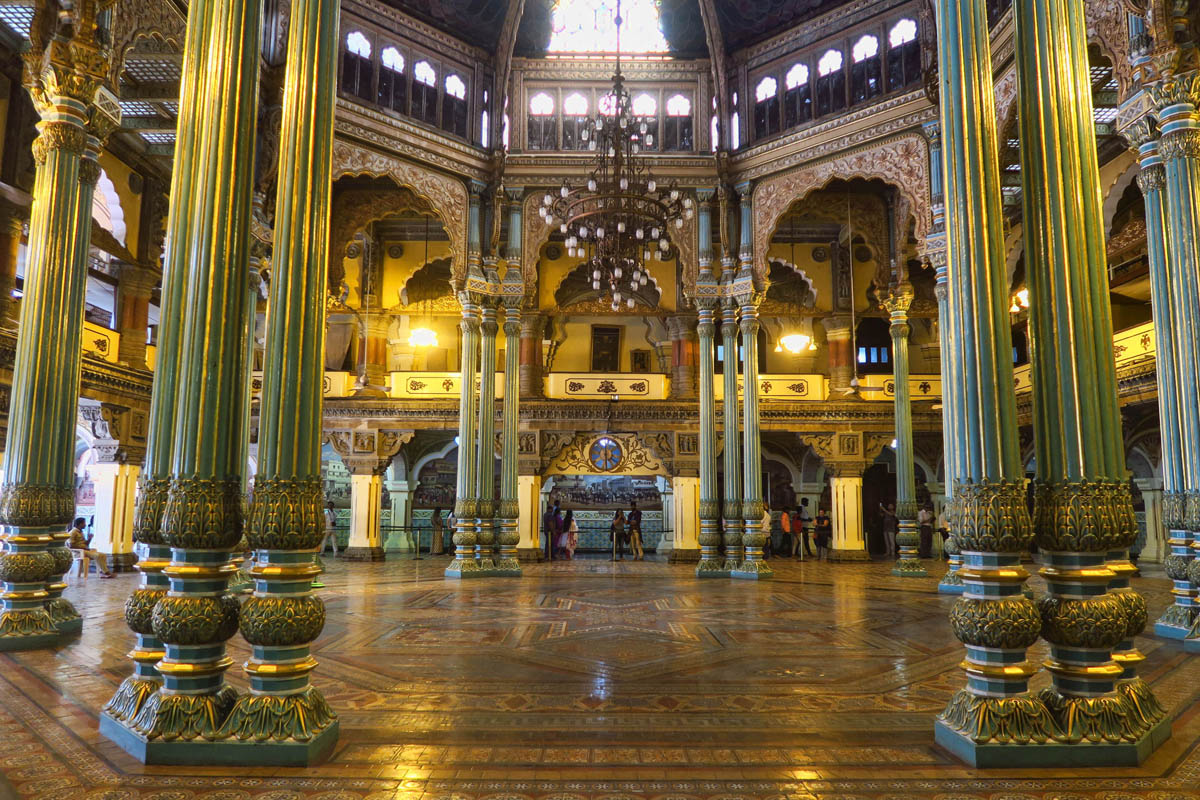
Included in the domed structure are geometric patterned stain glass panels in the ceiling, and tiled floors, both which contain peacock motifs.

Known as the “Wrestling Courtyard,” sight where wrestling matches were held, a favorite sport of the Mysore Kings. Ancient Indian wrestling also included use of ivory “knuckle-duster.” (Similar to brass knuckles.)
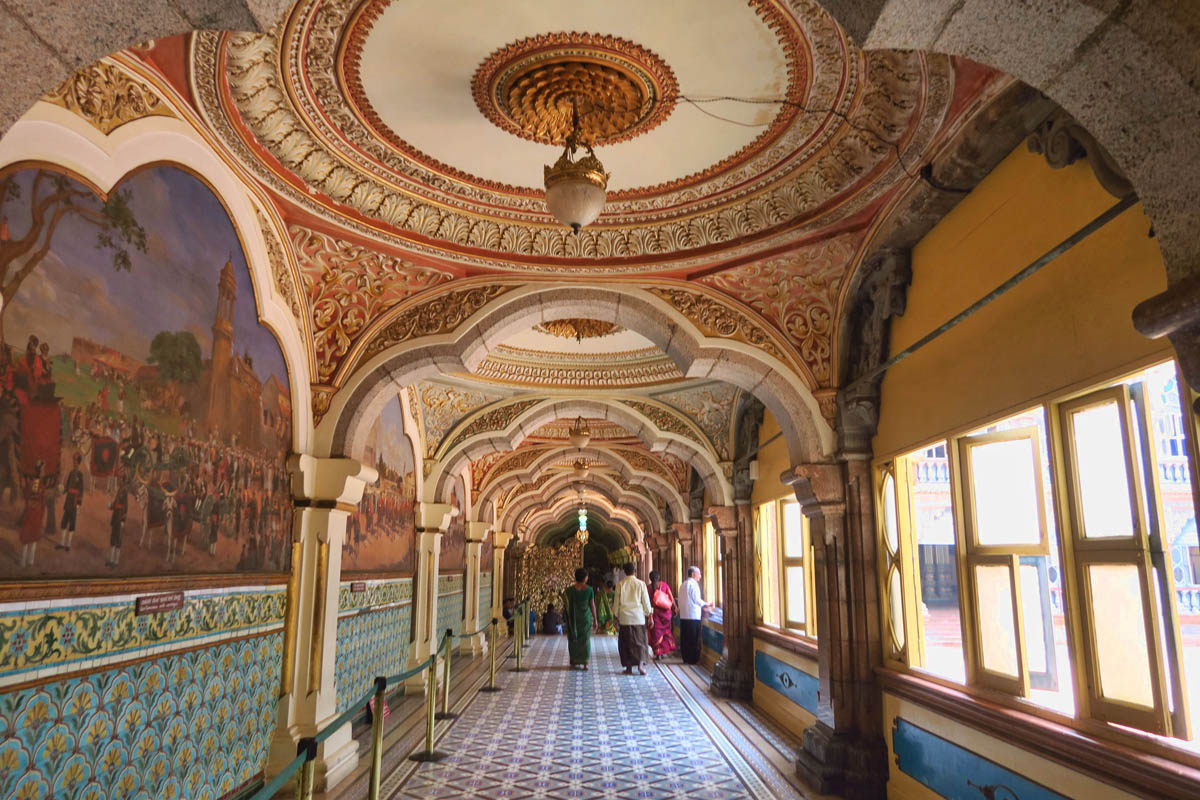
Even the hallways separating the rooms are impressive.
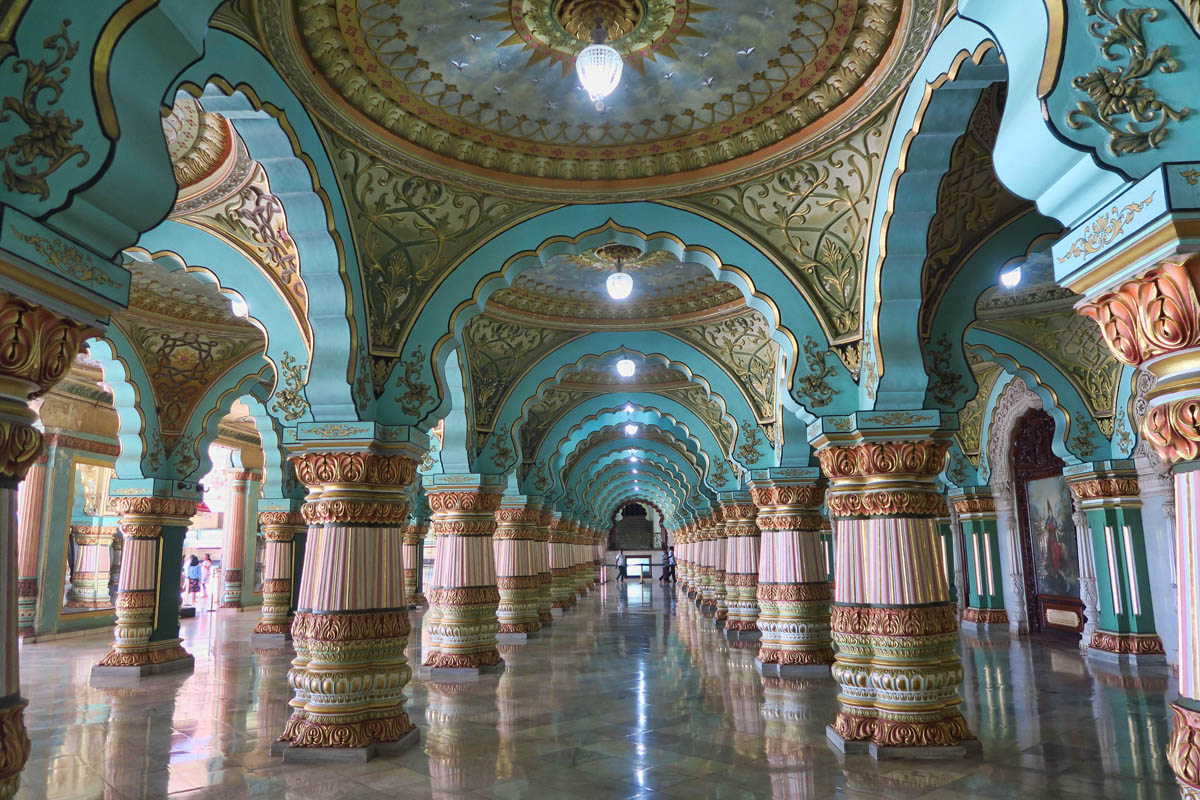
Public Durbar Hall where ceremonial gatherings were held when subjects came to see the King.
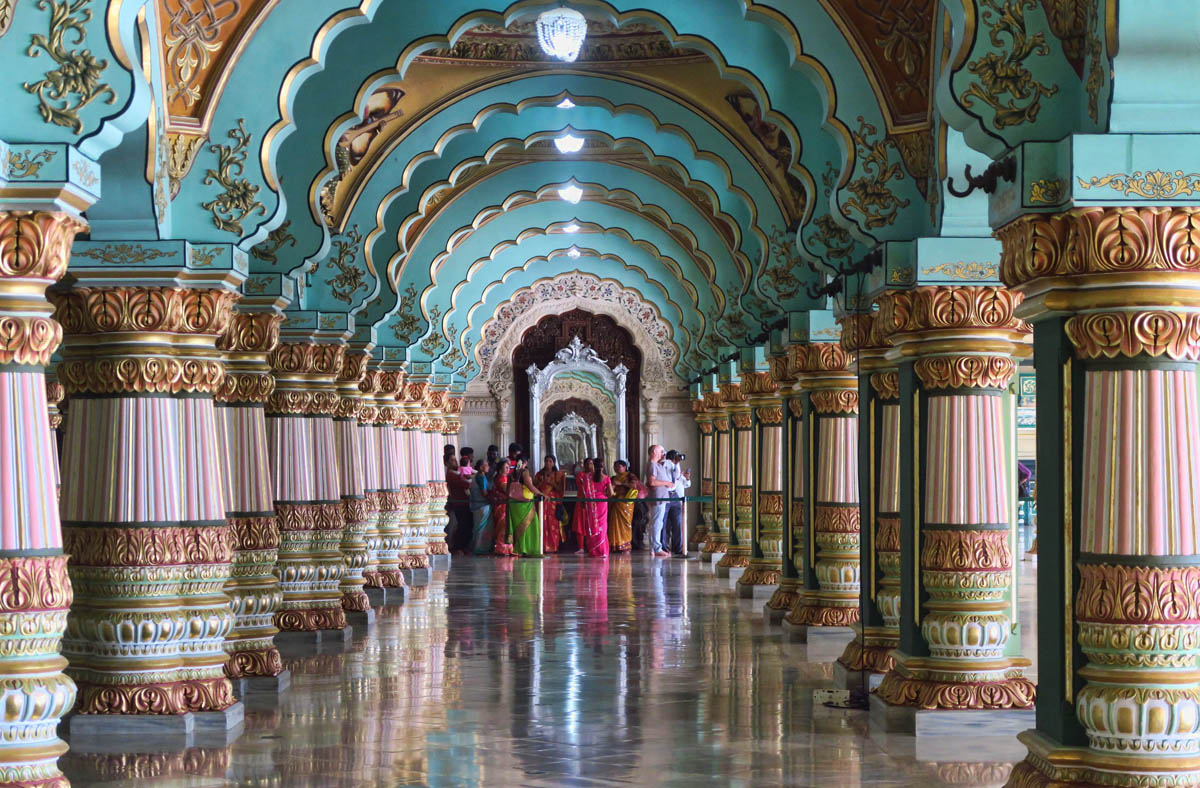
Floors along the edge of the hall are made from inlay work with semi-precious stones, similar to those used in the construction of the Taj Mahal.

Whereas the previous photos were from the Public Durbar Hall, this is the Private Durbar Hall where the King and his closest advisors and ministers would meet to discuss the affairs of the state. Pilars are made from hollow cast iron. King sat at the end of the hallway in a golden throne.

Wide angle view of palace, sadly too early for the massive Rose Garden.
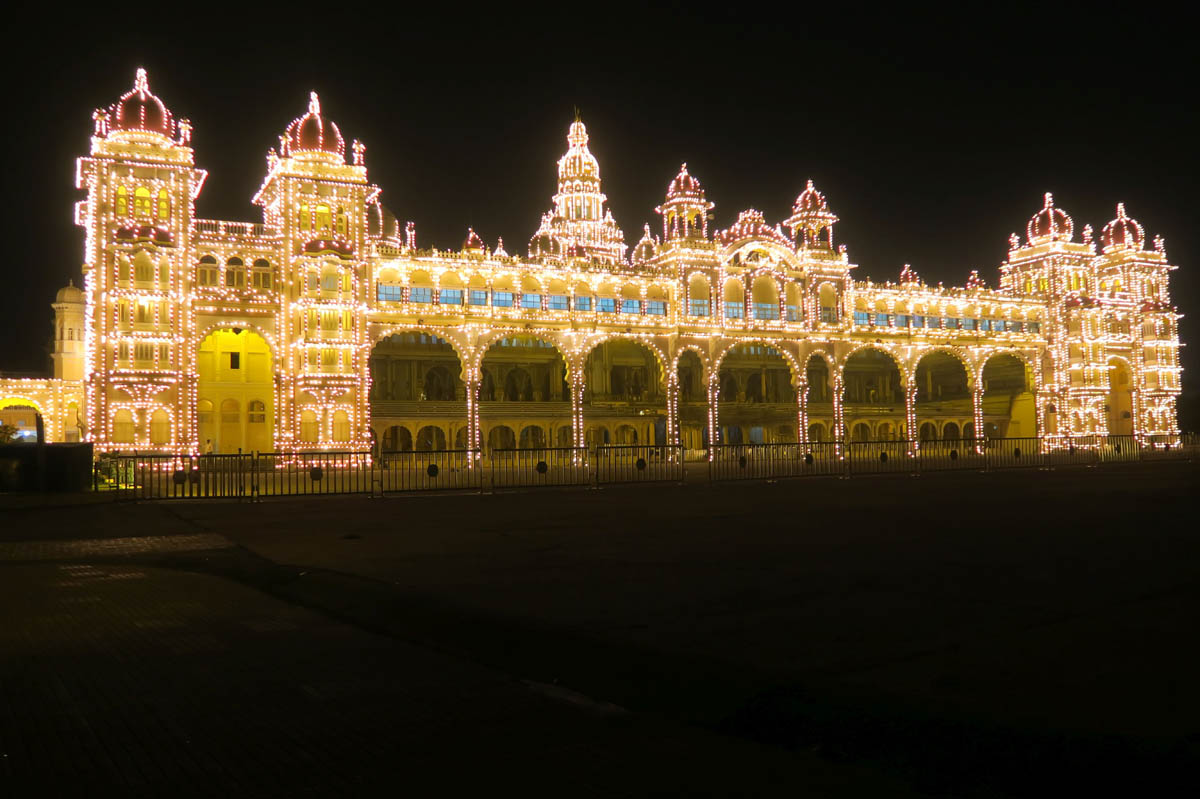
Not to be missed is the nightly light show, when the entire palace is trimmed in 98,000 light-bulbs.
My original reason for visiting Mysore was to make one quick stop to tour the Mysore Palace. Constructed in 1912, this royal residence is considered one of India’s finest, ranking second to the Taj Mahal, and one of India’s most popular tourist attractions. This palace is home to the Wodeyar Dynasty who ruled the Kingdom of Mysore from 1399 to 1950. The palace took 15 years to construct following the devastating fire in 1897 that destroyed the original wooden palace. I planned to visit it by day, and then return after dark for the spectacular light show when the entire palace is trimmed in 98,000 lights.
However, once my palace visit was over, I now had one more “mission” on my list, and that was to at least make an attempt at locating the young man in the market. I had to try. The odds were laughable, but I wanted to at least make an attempt for my loyal friend of over twenty years.
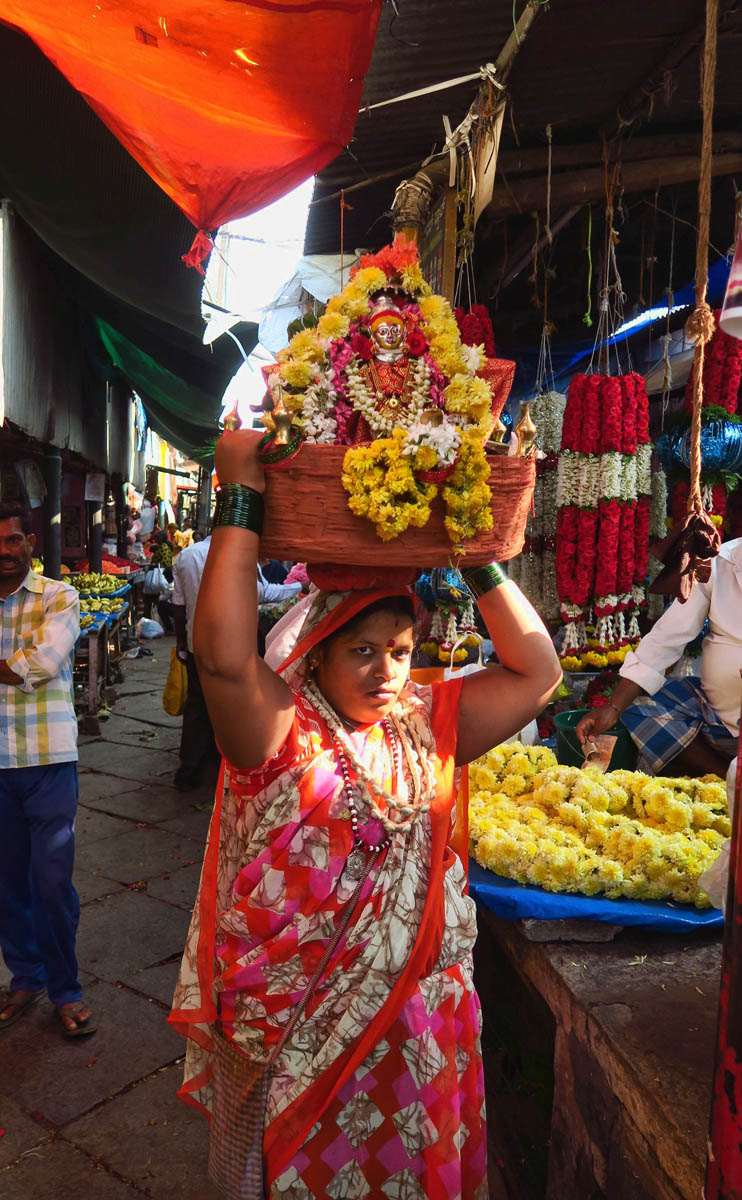
This woman doesn’t look happy with me, though she was smiling when she agreed to a photo. But the corners of the mouth went down as the camera came up.
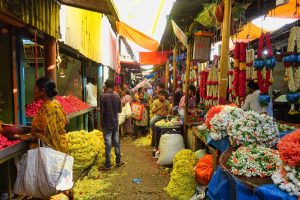
This region produces more than 75% of all flowers sold in the country.
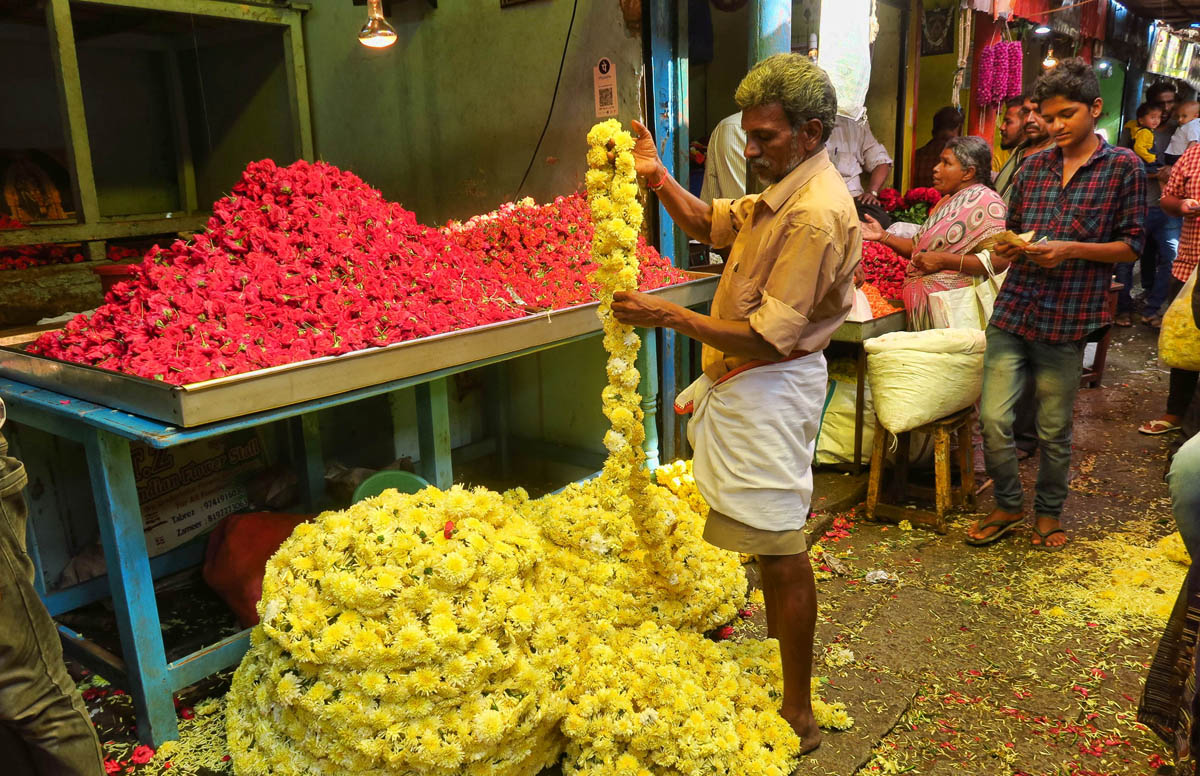
Flowers are strung into garlands to be worn, or hung as an offering to the Gods.
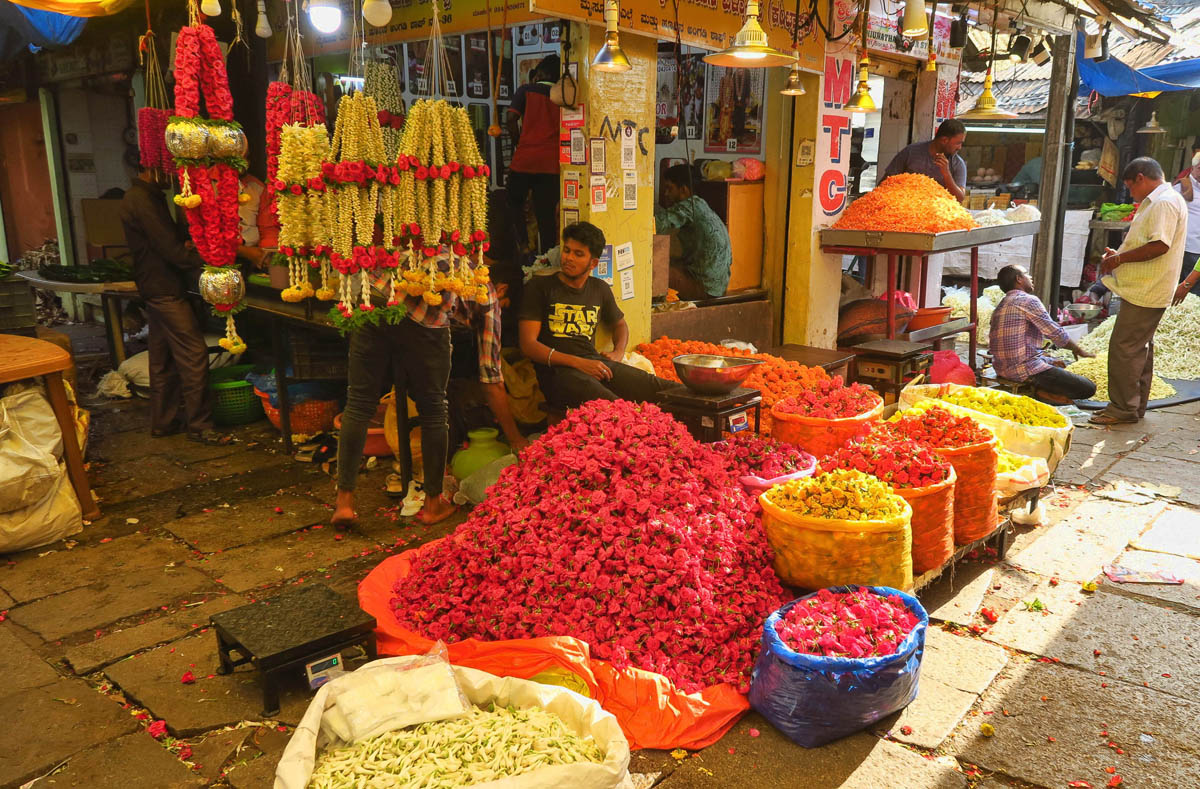
Piles of marigolds, chrysanthemums, jasmine, lotus, and roses all contribute to the intoxicating fragrance.
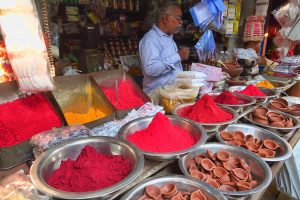
Both flowers as well as gulal powder play a vital role in India’s cultural and religious traditions
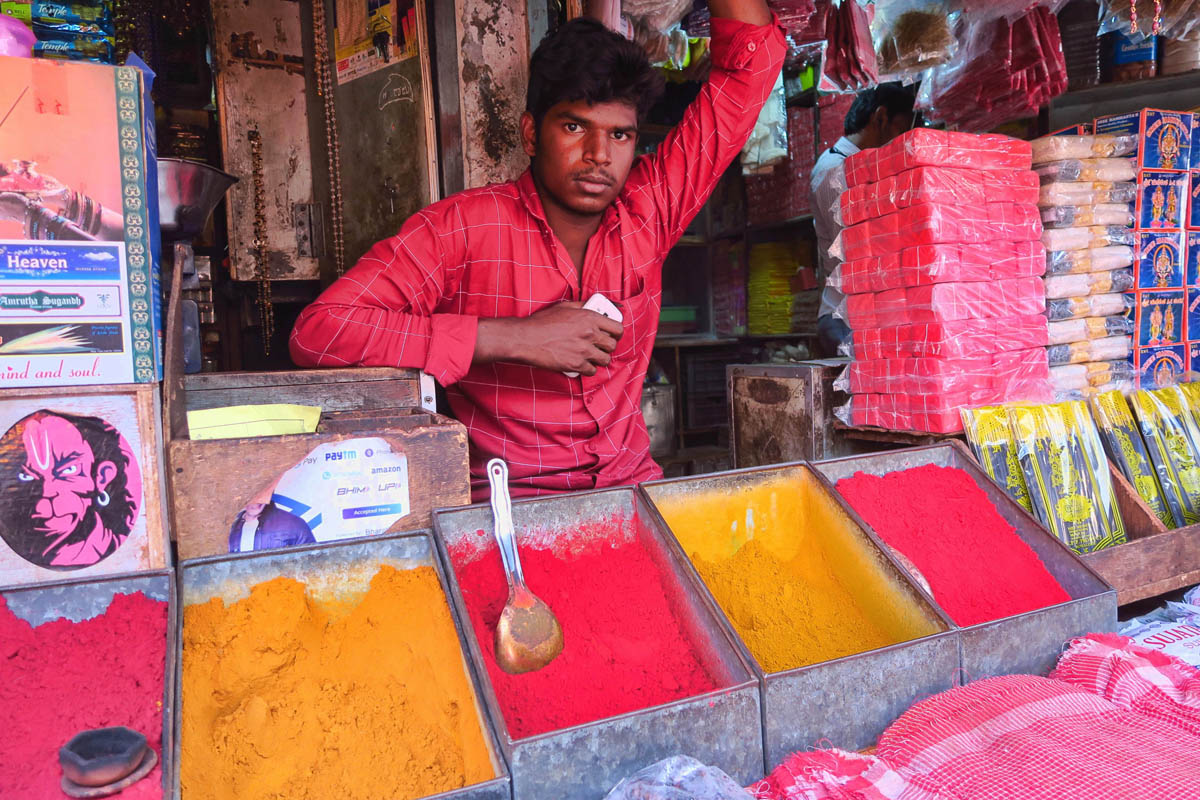
I find many stalls selling gulal powder in the market, but none with the crystal bottles I had seen in John’s photo.
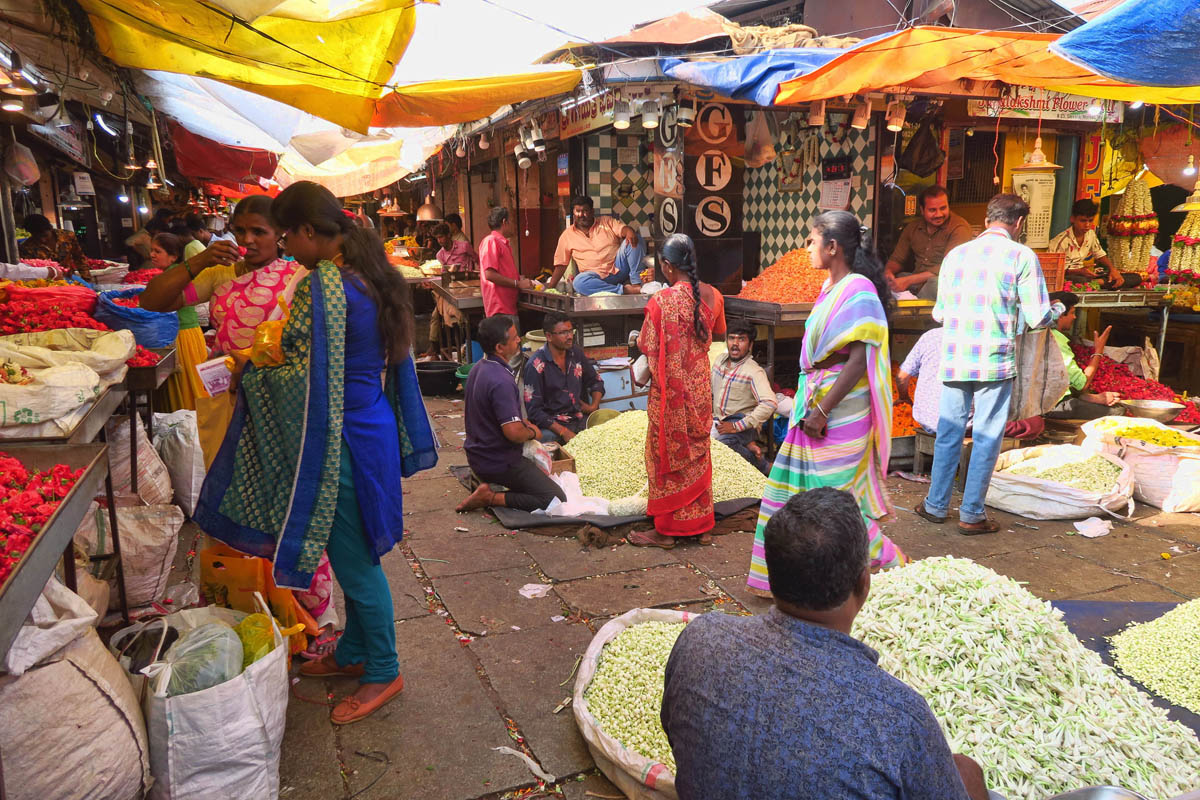
Piles of flowers heaped on the floor give this market a very heady fragrance.
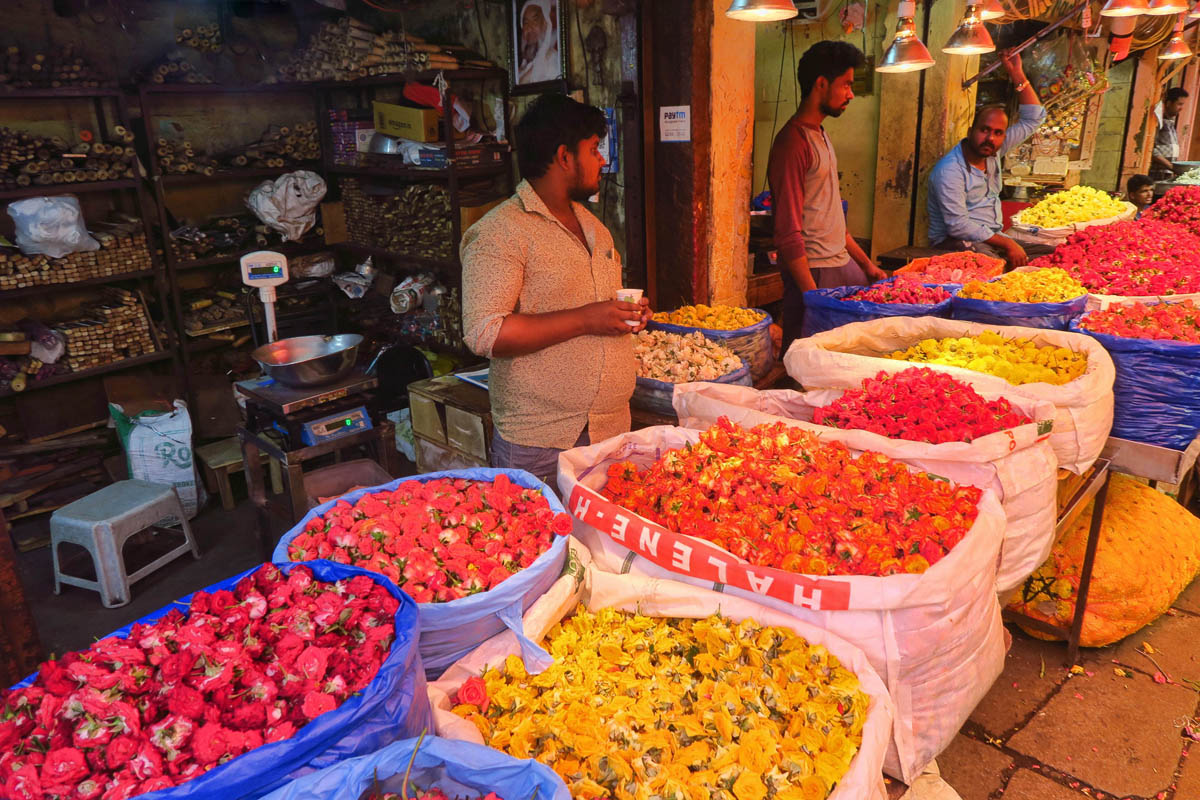
Huge bags of flower blossoms with such a short shelf-life shows the rapid turnover of this wholesale market.

This man is tossing the small petals of his flowers, fluffing them up to incorporate air to preserve them.
Constructed in 1886, the Devaraja Market is primarily a wholesale flower and produce market. I knew from the photo John sent that his friend owned a market stall selling incense and piles of vibrantly colored gulal powder used for social and religious markings. So I could eliminate the flower and produce sections on my search, and work my way over toward stalls selling more durable goods.
I wandered up and down the narrow pathways through the labyrinth of stalls in the sweltering heat and humidity, a fan in one hand and my iphone opened to the photo for reference in the other hand. Finally, I found an area of housewares, trinkets and hardware. It may sound like voodoo, but I felt an eerie, déjà vu vibe when coming upon Adil’s market stall. I am not sure if it was the crystal perfume bottles or the baseball cap that gave me the sense that I had reached someone or someplace familiar.
I saw the man in the stall, now more mature with a bit fuller face, but still wearing a baseball cap…not typical attire for local men from India. I stood from a distance and studied the structure and shelves in the background of the stall, dazzled by the row of brilliant conical-shaped piles Gulal powder along the front row. Then I lifted my eyes up to compare the details of Adil’s face, glancing back and forth at the photo John had sent from 2008. I anxiously worked up my nerve to approach.
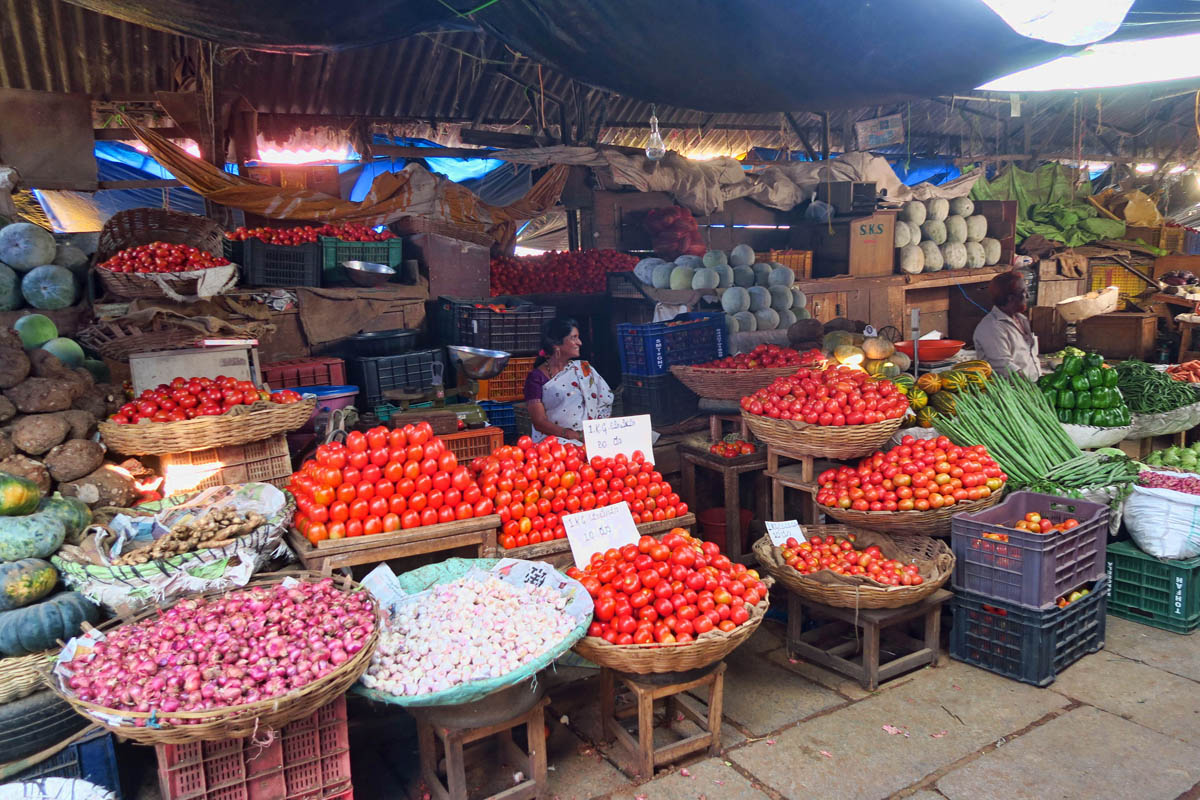
Most Indian food is prepared with fresh ingredients. There are not a lot of prepared foods or fast foods consumed.
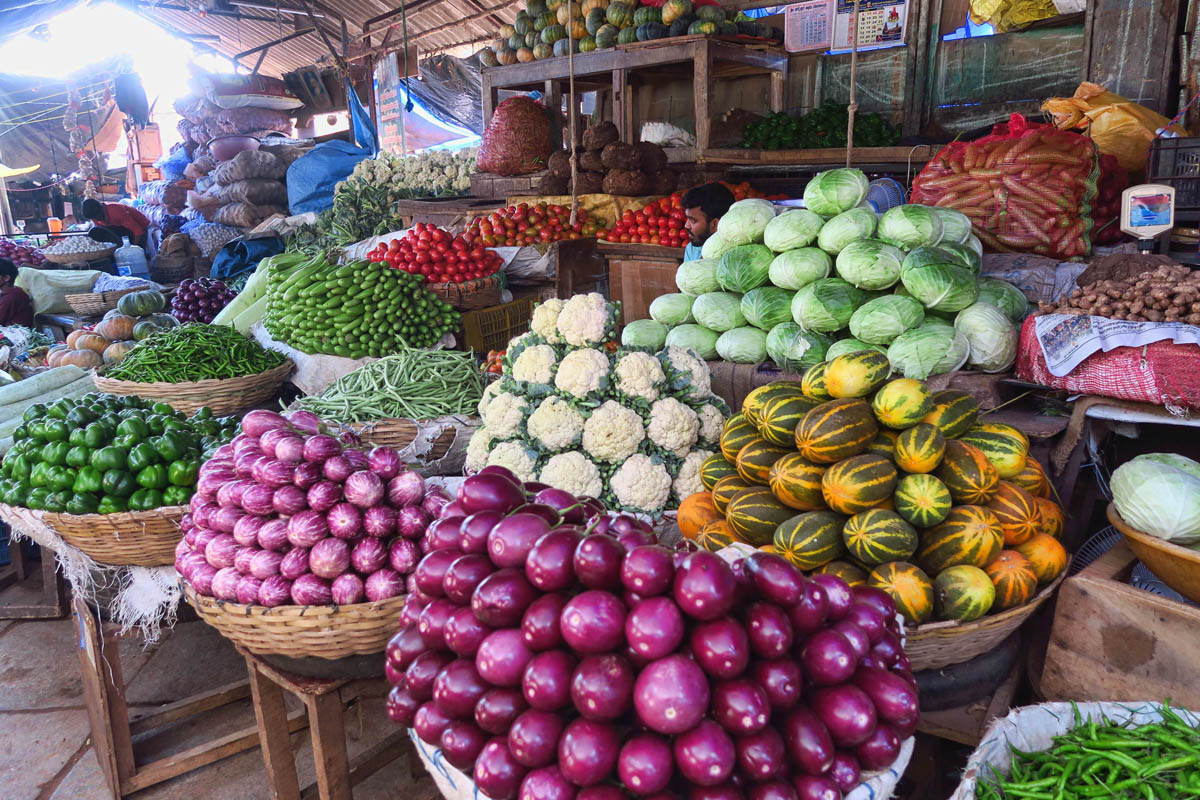
I am amazed by the consistent quality and uniform shape of the items for sale.

The vegetable section of the Devaraja Market is one of the freshest I’ve seen in my travels.
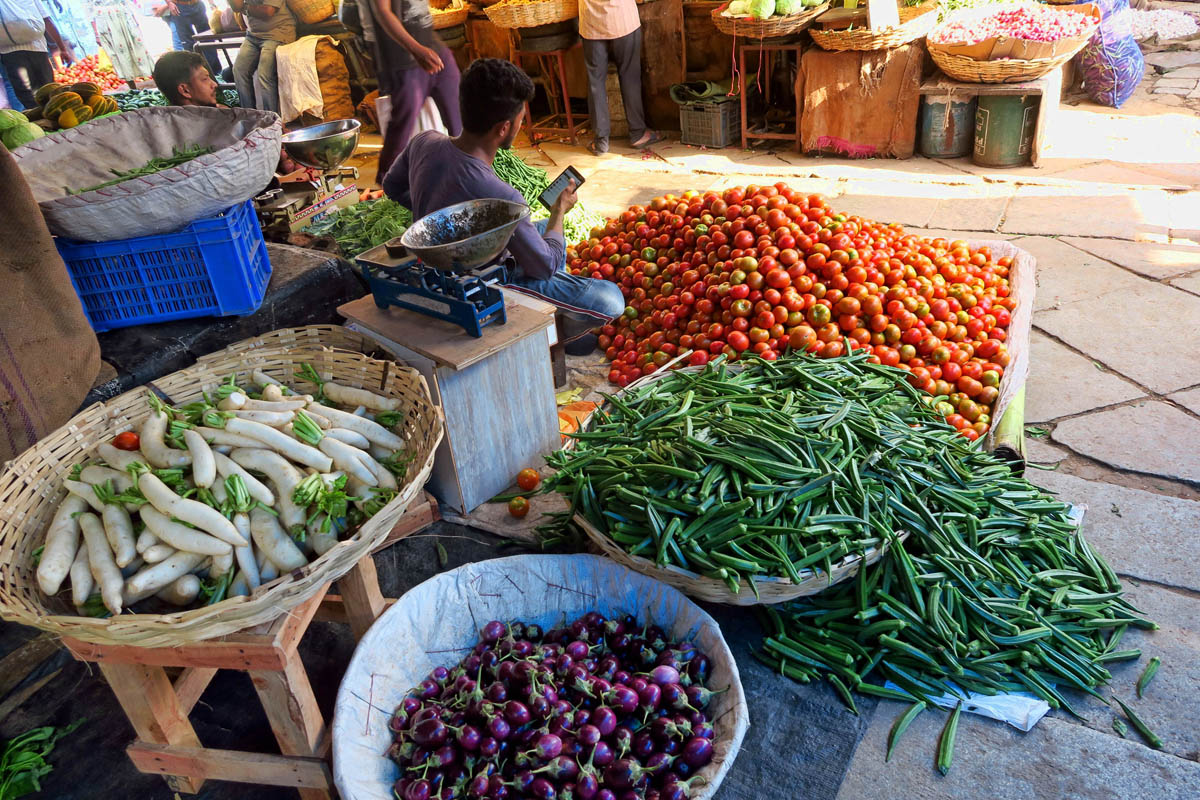
The center pile is okra, called “Ladyfingers” on Indian menus. These are some of the longest “fingers” I have seen!
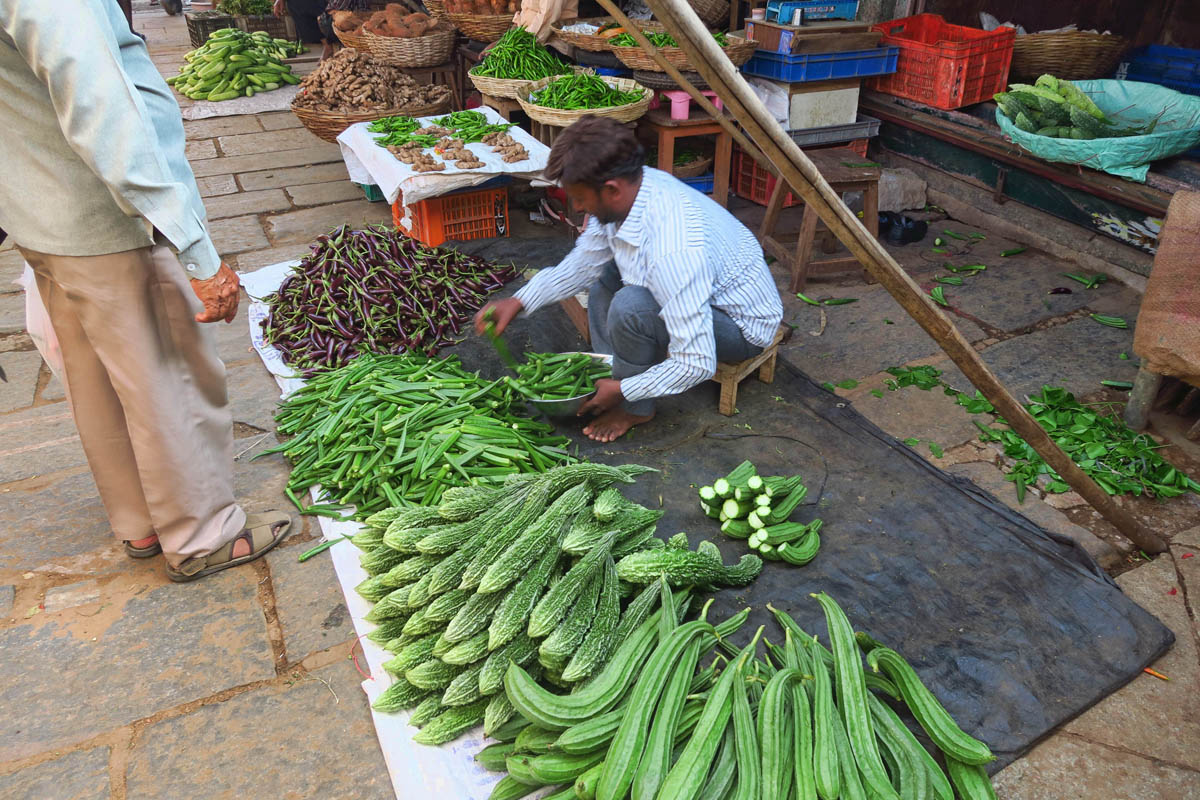
More okra, which is very prominent in Indian dishes, my favorite being “Bhindi Masala.”

One thing that puzzles me about the markets in India is why so many “birds of a feather flock together.” Here, there are rows of stalls, all selling coconuts. Why not diversify?

Same for the banana vendors that congregate outside the market. Why not spread out a bit to increase demand for all this supply?

Finally, I find my way out of the flower and vegetable stalls, and head over to the housewares. I sense I am getting close….
“Excuse me, sir…” I started out nervously while holding up the photo on my iphone. “I am looking for someone, and wonder if you could please help me? Do you happen to know this young man?” Adil took one glance at the photo and exclaimed “That young man is ME!!! When I was a BABY!”
I got so excited I could hardly contain myself. I quickly texted John a message with a photo, “Could it be?? I found him!”
What are the odds? Well, in a market covering 4 acres containing over 1,200 stalls employing 3,000 people in a city where I have never been before, not exactly good. So it felt like destiny. Or divine intervention.
For the remainder of my time in Mysore, and to this day in fact, I am still riding a high when I think about not only succeeding in finding a “needle in a haystack,” but also being able to help reconnect two ends of a friendship severed by distance so long ago.
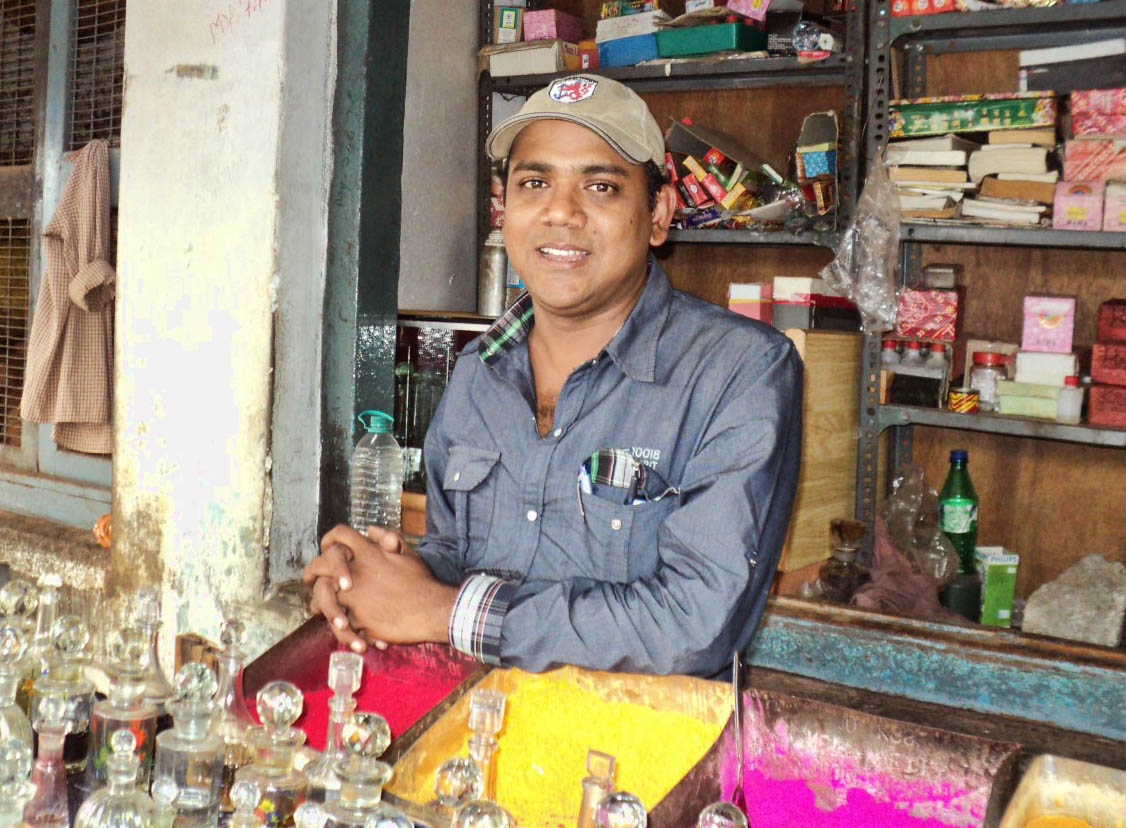
Adil, Devaraja Market, 2008. Photo by John,

Adil, Devaraja Market, 2020. Photo by me.

Wow. How cool that you melded into a link from past to present, friend to friend, twelve years apart. I can imagine it set a joy in your heart, especially since you were able to make the connection within such an interesting maze of beautiful flowers and veggies! From the opulence of the Mysore Palace to the tiny stalls and wares of the Devaraja Market…the colors are all so vibrant and beautiful!
And, speaking of mazes, I hope you are doing well during these convoluted times of ours…a hazy maze of crazy, for sure.
Wow! How fun that you were able to find Jon’s friend! Looks like an incredibly colorful stop on your journey through India.
What a blessing! Sometimes life is just perfectly glorious. Its those times we should hold on to, as you do!
Awesome pictures, especially of John’s friend. Amazing fruit and vegetables. I have a problem with the opulent palaces in that country of poverty. Trump would make a good leader there.
Your story of finding John’s friend brought tears to my eyes. How wonderful for you. The colors in these photos….wow!
I hope you’re doing well. The numbers here in AZ are skyrocketing… I just want to run away, but to where? If SpaceX was looking for a 67 year old woman with a dog I think I’d volunteer.
Amazing colors of produce (! best looking produce ever!) and amazing colors of powders and fabrics and building materials, wonderful, especially all the women at the end of that beautiful hallway in their colorful sari’s, great photo! Thank you for sharing your tales of travel and the people you meet. So if this is your “last” India post, what’s in store for us all next?
“Next to last.” 😉
What good investigative work! That’s awesome you found Adil! I can’t imagine how wonderful the marketplace smelled with all those flowers. Great pics!
Great post, love the photos and finding John’s friend brought tears to my eyes
That palace is incredible! And what a story to find the man in the picture! Fun following along, as always. 🙂
Dearest Suzanne,
It is me, your friend John from 1993. May I thank you from the bottom of my heart for the service you did while on your journey through India. I shared your ‘deja vu’ experience right there with you. I heard form Adil today who wrote he heard from you recently and was excited to learn you were writing regarding your visit. Because of your willingness to take on an adventure at my request, the Universe has rewarded us with a lovely connection.
With warmest gratitude,
John
How cool is THAT!?! India has so many beautiful people and buildings.
Wow, the architecture and markets were incredible. I would just walk around in a daze soaking it all in. Very cool that you were able to find and recognize that vendor after all these years!